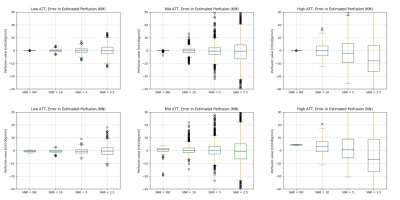Yechuan Zhang1 and Michael A Chappell1,2,3
1Institute of Biomedical Engineering, Department of Engineering Science, University of Oxford, Oxford, United Kingdom, 2Sir Peter Mansfield Imaging Centre, School of Medicine, University of Nottingham, Nottingham, United Kingdom, 3Wellcome Centre for Integrative Neuroimaging, FMRIB, Nuffield Department of Clinical Neurosciences, University of Oxford, Oxford, United Kingdom
1Institute of Biomedical Engineering, Department of Engineering Science, University of Oxford, Oxford, United Kingdom, 2Sir Peter Mansfield Imaging Centre, School of Medicine, University of Nottingham, Nottingham, United Kingdom, 3Wellcome Centre for Integrative Neuroimaging, FMRIB, Nuffield Department of Clinical Neurosciences, University of Oxford, Oxford, United Kingdom
Both neural networks performed well in simulation and in-vivo experiments. The dispersion neural network is shown to achieve a 5-fold improvement in computational cost compared with the gamma dispersion kinetic model.

Comparisons on perfusion error between the kinetic model with gamma dispersion effect and NNdispersion in simulation experiments. The top row shows the perfusion error for the dispersion KM at Low ATT (0-0.5s), Mid ATT (0.5-1.8s) and High ATT (1.8-2.0s) respectively for various SNR levels. The second row shows the errors estimated by NNdispersion. Both models performed well, with little overall bias, for short and mid ATT, but exhibited some bias at longer ATT and lower SNR. The bias was comparable between NNdispersion and dispersion KM and variance in estimates was consistent.

Comparisons on ATT error between the kinetic model with gamma dispersion effects and NNdispersion in simulation experiments. The plot on the left shows the ATT error for the gamma dispersion KM for various SNR levels. The plot on the right shows the errors estimated by NNdispersion. Both models performed well, with little overall bias for all cases. The bias was comparable between gamma dispersion KM and NNdispersion and variance in ATT estimates was consistent.